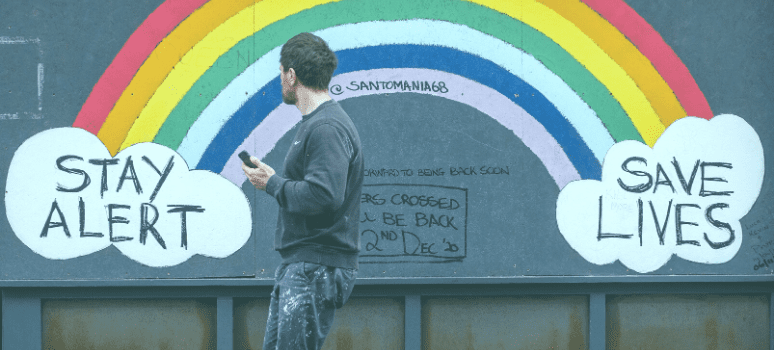When will we achieve immunity to covid-19? After a year, do we know if we will return to normal life? There are many questions and one answer, nothing has changed in the prevention we must maintain.
Older people, one of the most vulnerable first population groups to receive the Covid-19 vaccine, are hopeful that the time is closer when they will be able to come out of their isolation. The health sector is also hoping to live more securely. Gradually, the end of this unprecedented health crisis is becoming less distant for many population groups. However, we still have to maintain the constraints.
The various vaccines that have already been started against covid-19 will not by themselves eliminate this major problem and there are many questions that our patients ask us about the future of the pandemic. One of the biggest concerns we have is to know when we will be able to return to normal life. That is to say When are we going to stop wearing masks and keeping a safe distance?
The reality is that, at least for the whole of 2021, we are going to maintain most of the restrictions and 2022 is also expected to be a "pandemic" year. In fact, the WHO warns that "we will not achieve any level of herd immunity in 2021". The decline in the number of infections and the protection of individuals from the disease should be paralleled in all countries of the world.. The mobility of people around the globe is a risk factor for disease transmission, so protection against covid is needed globally, wherever we are.
Another frequently asked question is, do I have to maintain preventive measures if I have been vaccinated?
The truth is that precautions protect others. Until a high proportion of the population is immunised, we will continue to maintain these measuresThe following are the main ways to prevent the spread of the disease: masks, frequent hand washing, interpersonal distance, limiting our relationships and prioritising outdoor activities and ventilated spaces.
In addition, we can taking care of our health and strengthening our immune system. Even if we do not avoid infection, our bodies can be better prepared for the disease.
If someone in my family is vaccinated, can I hug them?
One of the things we miss most is physical contact and we want to hug each other. But the truth is that we don't yet know how the spread of the virus will evolve; We do not yet understand immunity for this particular virus, nor do we know how long the immunity provided by a vaccine lasts. On the other hand, no vaccine has a 100 per cent prevention efficacy against covid-19, although it is low, it is also possible to become infected.
All this means that, as mentioned above, we must maintain preventive measures. Older people, those who are convalescing from illness or are chronically ill, remain at high risk because of underlying health problems that SARS-CoV-2 can aggravate.
If we have symptoms, should we isolate ourselves?
The SARS-CoV-2 virus and its mutations are still present globally. One of the most effective precautionary measures is isolation at the first signs of symptoms.. The Control and Prevention Strategy has not changed, so we remind you what to do if you are a symptomatic or asymptomatic patient:
- A person with covid symptoms who does not require hospitalisation and can be effectively isolated should remain at home. up to three days after the fever and clinical picture have passed and for at least ten days from the onset of symptoms. A PCR is not normally required for discharge from work or for lifting isolation, but we recommend that for safety reasons, diagnostic tests should be carried out.
- A person diagnosed through PCR and asymptomatic should be isolated for ten days from the date of sampling.
We should clarify that when we hear about quarantine, this is the isolation a person must maintain when they may have been exposed to the virus.. However, it is not 40 days that you have to spend in this state.
What about the new strains, are they more dangerous?
The first strain we heard about was the British strain, which is more contagious although no differences were detected in the type or severity of symptoms. Then the Brazilian and South African strains have been detected, and now it is the Californian strain that is the cause for concern. Why? This strain, which emerged last May, is said to spread more easily, carry a higher viral load and is able to evade antibodies. It is normal for a strain to weaken as it spreads and, although it is too early to confirm this, no such signs of increased weakness have been found in the Californian strain so far.
On the other hand, the emergence of new strains depends on the speed at which the virus spreads.. Although the increased virulence of any of the strains has not been demonstrated, the problem of further - and more rapid - infection would bring us back to a situation of collapse in intensive care.
How long do the side effects of Covid-19 last?
We have discussed the side effects of covid-19 in the past. The persistent covid syndrome has different symptoms that do not have to appear in their totality or with the same intensity or duration among all patients. On the other hand, the presence of the chronic fatigue syndrome among many people who have suffered from covid-19.


